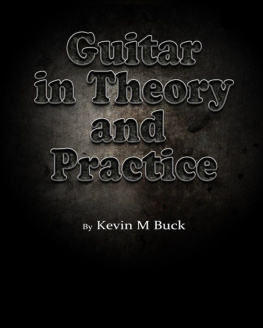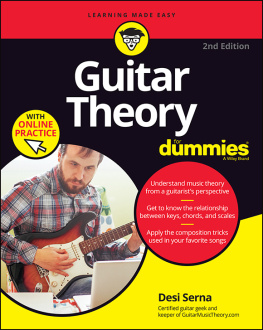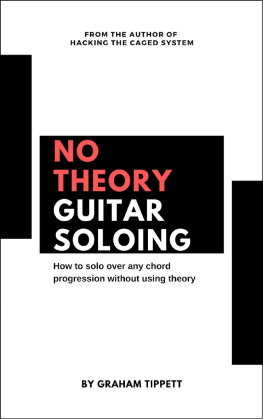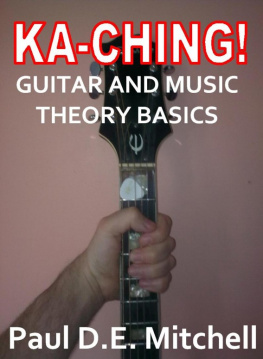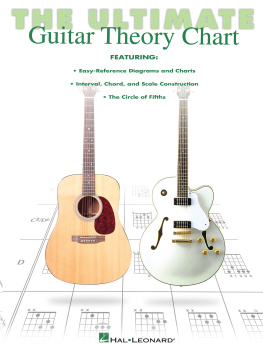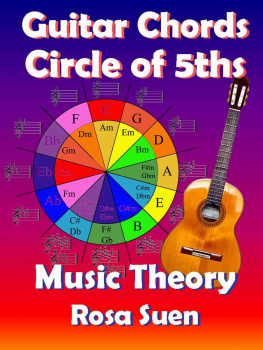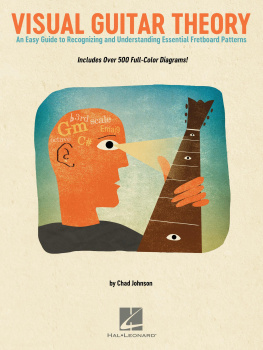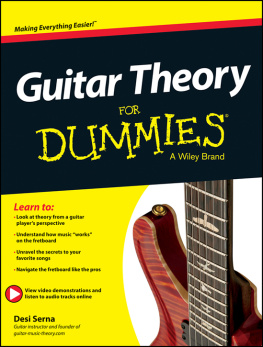Copyright 2011 Kevin M Buck
Eternal Eye Publishing
ISBN: 0983534705
ISBN-13: 9780983534709
eISBN: 9780983534723
cover design, book formatting and poster illustration by Jeff M Napadow
All rights reserved. No part of this book may be reproduced or transmitted in any form, electronic or mechanical, including photocopying, or by any information storage or retrieval system, without written permission of the author.
Acknowledgement
I have learned so much about music from so many places. I cannot tell you exactly where I learned some of this info, or from where it all originated. Some of these ideas are recurring thought forms that have been around forever. I discovered much of this by trial and error, and by personal reflection and study. However, I still must give an incomplete list of people who I have learned from, either directly or indirectly. I recommend looking into all of their work, as well as all of my work, for future study. They have all helped me to learn and develop many of the ideas in this book through their words, writing, or by analysis of their compositions, philosophies, playing styles and music. I also owe thanks to every book, magazine, television program, and conversation that I ever had with anyone about music.
Uli Jon Roth, Harry Hmura, Joe Satriani, Steve Vai, Randy Rhoads, Ritchie Blackmore, Yngwie J. Malmsteen, Jason Becker, Marty Friedman, Jimi Hendrix, Allan Holdsworth, Al Di Meola, Johann Sebastian Bach, Wolfgang Amadeus Mozart, Ludwig Van Beethoven, Niccolo Paganini, Claude Debussy, Arnold Schoenberg, John Coltrane, Django Reinhard, Pythagorus, Aleister Crowleyand thousands of other people that I cannot remember, but to whom I owe much for their infinite wisdom.
I also should acknowledge the fact that without the support from my loving wife Laura, her parents Leslie and Ellen Zurawic, my mom Marilyn and her husband Richard Dort, my dad Ronald E. Buck, Jeff Napadow, and so many of my friends. I certainly would not have been able to create this book, or any of my musick for that matter, without you. I am eternally grateful for the sacrifices you have all made, and continue to make for me, to live my dream of being a full-time musician. This book is a product of all of your dedication.
TABLE OF CONTENTS
Introduction
I created this book to give guitar players a method to become better musicians by taking the most important ideas of music and presenting them in a simplistic way for guitar players. Guitar in Theory and Practice is a systematic guide to learning all of the scales, chords and arpeggios needed for improvisation. This book includes the only proven method to learning how to play and memorize seventh arpeggios with fingerings and examples. It is designed to help students learn, memorize, and play scales, chords and arpeggios in a new way so that they can play and create the music that they always wanted to. This book also gives examples of the difficult techniques that need to be practiced on the guitar in order to become a proficient soloist. Guitar in Theory and Practice teaches students how to create their own music, and how to use these various scales, chords and arpeggios in their soloing and songwriting. I also have included blank fingerboard maps, blank chord charts, blank notation sheets, blank tabulature sheets, and blank sheets with both tab and notation for you, as I have always had trouble finding them.
This book was created to show the relationships of all things, in order to help us develop our personalities and become better artists and better human beings. It also provides insights to gain a greater understanding of music and life (as music and art are a reflection of life). Guitar in Theory and Practice is the first book containing a poster that relates astrological signs, pitches, colors, planets, gods, elements of life, masculine and feminine dualities, time, intervals, numbers, modes and chakras. If you learn anything of value from this book, please share it with others, because music is meant to be shared and should always evolve.
What to learn in order
Many guitar players I know have trouble remembering all the various things that they learn. They learn certain things, but cannot relate them to everything else. They have a bunch of information (chords, scales, licks, songs, riffs, etc.) just floating around in their heads, and they end up chasing their tails - learning new things while forgetting the things they had previously learned. You can use this as a guide to what you should learn and memorize.
Think of music or guitar as a tree, and all the aspects/elements of music are branches on that tree. By organizing the individual chords/arpeggios (arpeggios are just chords with the notes played individually) and scales properly we can quickly identify the information in our mind like a filing cabinet system. For the most part, all music can be identified by chords and scales, also known as harmony and melody, or riffs and solos.
Of course, this tree branch approach can work with any element of music, such as rhythm, memorizing songs, dynamics, technique, timbre, form, etc. You must be sure you memorize the first thing before going to the second, then be sure you have the first and second things memorized before moving on to the third. Then, eventually the tree will be huge and healthy. Otherwise you will be juggling too much information, and it will be difficult to get anywhere.
Outside of obvious practices like working on technique, rhythm, reading, writing, learning songs, improvising, jamming, recording, transcribing, creating songs and watching sports on TV, you must also learn (and memorize) scales and chords. The following pages contain a systematic approach to which chords/arpeggios and which scales we should learn (and memorize) in a general order of importance. Depending on the genre of music you play, the order of importance will change.
Names of the Strings
The string closest to the ground (highest in pitch) is known as your 1st string.
Your 1st string is also known as the high E string.
The one above that is your 2nd string and is also known as your B string.
The one above that is your 3rd string and is also known as your G string.
The one above that is your 4th string and is also known as your D string.
The one above that is your 5th string and is also known as your A string.
The one above that is your 6th string and is also known as your low E string.
If you are a beginner or teaching a beginner you can use the mnemonic
This is an easy way to remember the names of the strings from high to low.
The name of the string is also the name of the pitch it produces when plucked open.
Note Names Throughout the Fingerboard
The Music Alphabet
In music we use letters for the note names. The music alphabet has only seven letters and goes ABCDEFG. After G it goes back to an A (though it is a higher version of the pitch A, which is known as an octave higher). ABCDEFGABCDEFGAB
This goes up and down until you run out of the instruments range or until the human ear cannot hear the highest or lowest of notes anymore. So again, A is after G, and G is before A in the musical alphabet.
Steps



